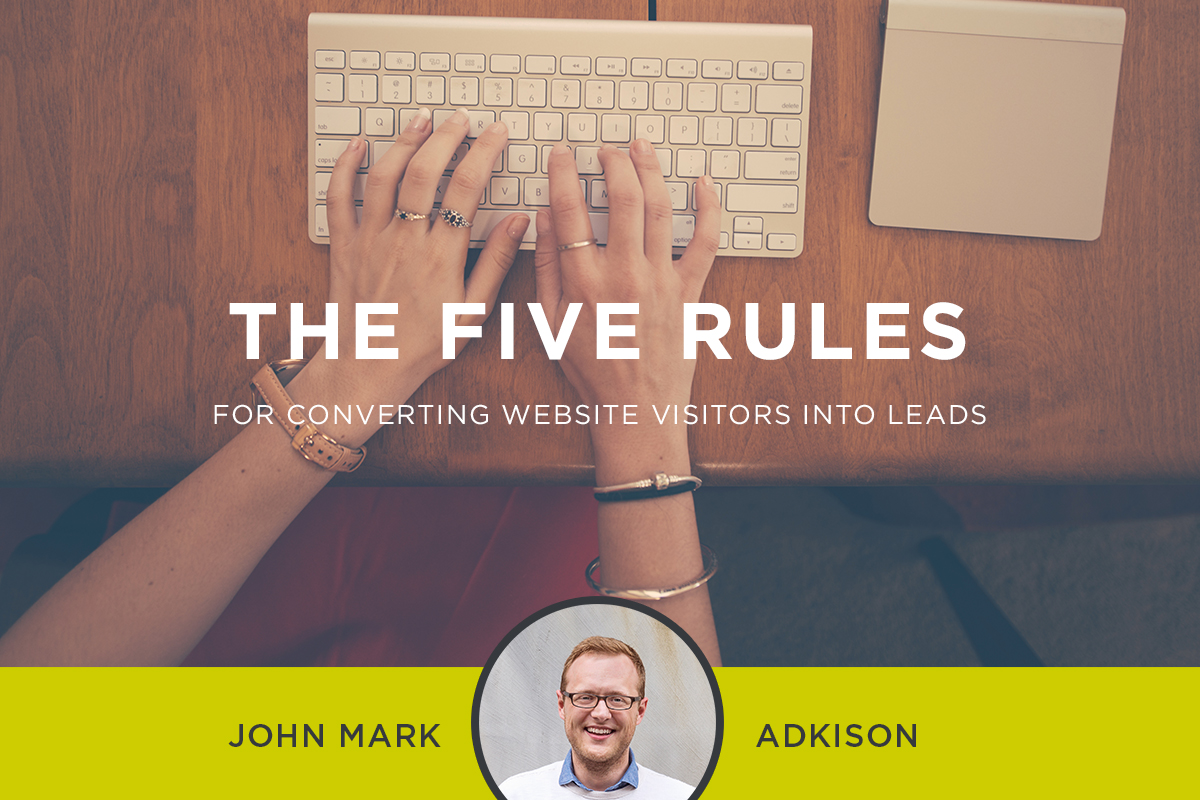When it comes to marketing your business online, it’s not enough to drive visitors to your website, you have to convert them as well. When we say convert, we mean acquire their email address (turning them into leads) to nurture them into customers.
When we say convert, we mean acquire their email address, turning them into leads, to nurture them into customers.
So how do you convert website visitors? Typically, they are converted through forms on your website. The form fields ask for contact information or other information important to your company. However, website visitors aren’t going to give up their email addresses for nothing. These forms should be attached to offers the visitors receive upon submitting their information. Offers can include anything from newsletter subscriptions to coupons to ebooks to contests.
But when it comes to providing offers and converting website visitors, there are a few rules to follow to make sure you’re maximizing your website’s potential for conversions.
Rule 1: Offer Valuable Content
People are hesitant to give up their email addresses, and rightly so. We’re all tired of spam inundating our inboxes. So you have to provide truly valuable content — something they’ll actually want to see in their inboxes.
Before you begin creating content, find out what your prospective leads find valuable. Would they be likely to subscribe to a newsletter in which you share your industry smarts? A coupon for your product? A whitepaper that shares tips about dealing with your field? Or a trial run of your services? Whatever it is, make sure your content is well-thought-out, well-written and well-built, and make sure it’s something your target audience will find useful.
Rule 2: Know What To Ask For
Every form should ask for the visitor’s name and email address. When it comes to asking for more information than that, make sure your content is worth it. For an enewsletter, chances are all you need is their email address. For a package that will be mailed out, you’ll need their office/home address. Ask for whatever is required to get the offer to the lead.
Perhaps your marketing team would like to know more about visitors being converted on the site, even if it’s not necessarily required to provide the offer to them. For example, a tourism bureau might want to see where their leads live, so they’ll ask for city or region. A financial advisory firm might want to know which money issues worry prospectives the most. Don’t be afraid to ask those questions, just make sure your content is valuable enough for a longer form. Just remember, long forms can often turn visitors away, especially if it requires information that’s too personal.
Rule 3: Give Clear Direction
Make it as easy as possible for visitors to find your offers. Use calls-to-action (CTAs) throughout your site that link to your landing pages and forms. Insert forms into the header of your homepage. Clearly and quickly tell your visitors how to download the offer or receive a piece of content.
Internet users have short attention spans. If they can’t find what they’re looking for immediately, then they’ll likely leave your site and go find answers elsewhere. It’s why so few Google users click to the second page of their search results. Make it obvious and apparent, not a harrowing quest.
Rule 4: Automate Your Follow-Up
Every form should direct a visitor to a thank you page after they hit submit. This thank you page should confirm that the form was successfully submitted, and explain what will happen next for the lead. This is another great opportunity to put more CTAs in front of your new leads, directing them to more content offers.
If you are sending offers via email, make sure they’re automated to send right after the visitor submits the form. Even if they’re registering for a later event or contest, send an automatic follow-up email confirming their registration or entry. You don’t want your leads to second-guess whether or not filling out the form worked.
Rule 5: A/B Test Your Offers
A/B testing is a powerful yet simple practice when it comes to increasing conversions. A/B testing is measuring two different conversion pathways to the same offer against each other to see which performs better. For example, you might decide to present a CTA that is a simple text link to half of your visitors, while presenting a CTA that is a large, graphic image to the other half. Both CTAs lead to the exact same landing page and offer. But after a hundred visitors cross your site, see which CTA gets more clicks and conversions.
You can A/B test landing pages, forms, designs and even your offers to see what gets more conversions. This tells you what’s working and what’s not working. This helps you discover which content is more valuable to your leads, which designs attract leads the best and which copy is the most persuasive. It helps you to build a better digital marketing strategy.
Converting your website visitors into leads not only helps you build a list of prospective customers, it gives you valuable insight into how your prospective customers interact with your site and content. And when those leads are ready to go to sales, you’ll be able to pass along their engagement history, letting sales know what interests their leads.
To start turning that website traffic into new business, download our ebook on how to nurture leads that convert through your site.

